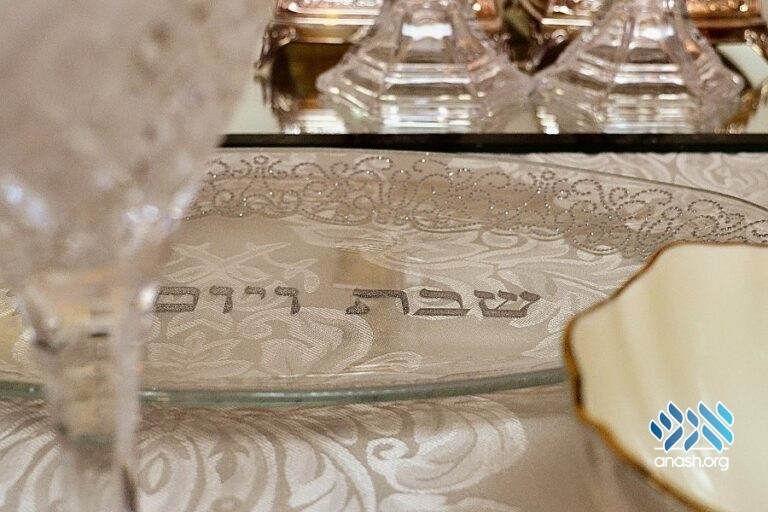Ask the Rov: What is required for seuda shlishis on Shabbos?
By Rabbi Chaim Hillel Raskin – Rov of Anash in Petach Tikvah
Chazal say that there is an obligation to eat three meals on Shabbos, derived from the three mentions of the word “hayom” in connection to eating the monn on Shabbos.1
The first two meals should consist of bread,2 but the third meal’s required menu is subject to varying views: (1) Bread, (2) mezonos, (3) filling foods like meat or fish, or (4) fruit. The Alter Rebbe rules that one should eat bread unless he is so full that it would cause him pain.3 Some poskim note that since the obligation of seudos Shabbos is miderabanan, there is room to follow a more lenient opinion.4
The Levush explains that the leniencies not to eat bread apply specifically to the third meal because the third mention of hayom is in the context of not finding the monn in the field on Shabbos (hayom lo).5 The Mishna Berura writes that people are lenient because they are still satiated from their morning meal.6 Due to the lesser obligation, if one forgets retzei in bentching by seuda shlishis, he need not repeat the bentching.7
The Rebbeim would usually not wash for seuda shlishis and would suffice with tasting something small. In the winter, the Rebbe Rashab would often eat mezonos after kiddush and then wash for challa after mincha. The mezonos counted for seuda shlishis (before the “second meal”) since it was after the time of mincha gedola (half an hour after chatzos).8
The Rebbe revealed a deeper aspect to this. Halacha says that the mitzva of seudos Shabbos is to delight in Shabbos (oneg), and if eating bothers you, you are exempt.9 Now, toward the end of Shabbos (raava d’raavin – “the will of wills”), there is a lofty revelation of Elokus (ayin) that is a foretaste of Moshiach’s times when there won’t be eating or drinking. For the Rebbeim, who felt that revelation, it was painful to eat a meal at that time, and it was, therefore, a hidur for them not to eat bread. The same can apply to chassidim who are deeply mekushar to the Rebbe and feel pained to eat during that time.
Yet, they made a point of eating some physical food to emphasize that Moshiach is connected specifically to neshamos clothed in bodies.10
See Sources (open PDF)
From The Weekly Farbrengen by Merkaz Anash

Discussion
In keeping in line with the Rabbonim's policies for websites, we do not allow comments. However, our Rabbonim have approved of including input on articles of substance (Torah, history, memories etc.)
We appreciate your feedback. If you have any additional information to contribute to this article, it will be added below.